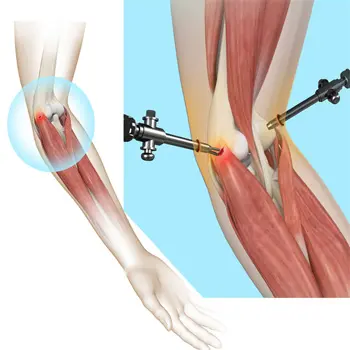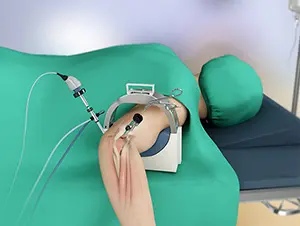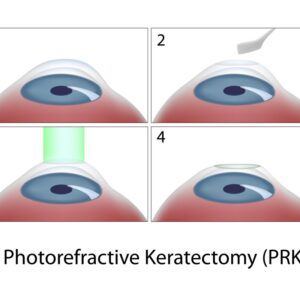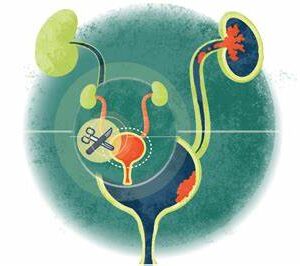Description
Elbow arthroscopy is a minimally invasive surgical procedure used to diagnose and treat problems within the elbow joint. It involves making small incisions and using a tiny camera (arthroscope) to visualize the joint, allowing the surgeon to perform necessary repairs with specialized instruments.
Familiarity with Treatment
Elbow arthroscopy is commonly used to address various elbow conditions, including:
- Arthritis: Both osteoarthritis and rheumatoid arthritis.
- Injuries: Such as fractures, ligament tears, and tendon damage.
- Inflammation: Conditions like synovitis (inflammation of the joint lining).
- Loose Bodies: Removal of loose bone or cartilage fragments.
- Stiffness: Releasing tight muscles or scar tissue12.
Procedure
- Preparation: The patient is given anesthesia (general or regional). The elbow is cleaned and sterilized.
- Incisions: Small incisions (portals) are made around the elbow.
- Insertion of Arthroscope: The arthroscope is inserted through one of the portals to provide a clear view of the joint.
- Treatment: Specialized instruments are inserted through other portals to perform the necessary repairs, such as removing loose bodies, smoothing cartilage, or repairing ligaments.
- Closure: The incisions are closed with sutures or adhesive strips12.
Who is it Suitable For?
Elbow arthroscopy is suitable for individuals who:
- Have persistent elbow pain or stiffness that does not respond to non-surgical treatments.
- Suffer from conditions like arthritis, tendonitis, or ligament injuries.
- Experience mechanical symptoms like locking or catching of the elbow12.
Who is it Not Suitable For?
Elbow arthroscopy may not be suitable for individuals with:
- Severe joint damage that requires open surgery or joint replacement.
- Extensive scar tissue from previous surgeries.
- Certain nerve conditions that could be exacerbated by the procedure2.
Advantages
- Minimally Invasive: Smaller incisions lead to less pain and quicker recovery.
- Reduced Risk of Infection: Compared to open surgery.
- Faster Recovery: Patients often return to normal activities sooner.
- Better Visualization: The arthroscope provides a clear view of the joint12.
Complications
While generally safe, potential complications include:
- Infection: At the incision sites.
- Nerve Damage: Due to the proximity of nerves to the surgical area.
- Stiffness: Post-operative stiffness may occur.
- Bleeding: Or blood clots12.
Previous Care
Before the procedure, patients may need to:
- Undergo imaging tests like X-rays or MRI.
- Follow specific instructions regarding fasting and medication adjustments.
- Arrange for someone to drive them home post-surgery12.
Aftercare
Post-operative care includes:
- Rest: Keeping the elbow elevated and avoiding strenuous activities.
- Ice: Applying ice packs to reduce swelling.
- Medication: Taking prescribed pain relievers and anti-inflammatory drugs.
- Physical Therapy: Engaging in exercises to restore mobility and strength.
- Follow-Up: Attending follow-up appointments to monitor healing12.





Reviews
There are no reviews yet.